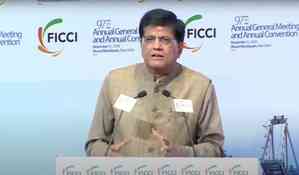Precision in Proctology: Laser Fibres for Targeted Treatment
Proctology, a medical specialty focused on rectal and anal disorders such as hemorrhoids, fistulas, and fissures, experiences a troubling rise in cases every year in India. This escalation, especially prevalent among teenagers and young adults, is worsened by a lack of specialists and societal hesitancy to openly address these issues and the apprehension surrounding surgery.

by Dr Rajeev Premnath, General Laparoscopic Surgeon and Endoscopist, Minimally Invasive Proctology Department at Ramakrishna Hospital, Bengaluru.
Proctology, a medical specialty focused on rectal and anal disorders such as hemorrhoids, fistulas, and fissures, experiences a troubling rise in cases every year in India. This escalation, especially prevalent among teenagers and young adults, is worsened by a lack of specialists and societal hesitancy to openly address these issues and the apprehension surrounding surgery.
In the past, managing these conditions typically required undergoing painful surgeries that resulted in extended periods of recovery. However, the introduction of laser fiber technology brings about a sense of renewed hope for a more refined and accurate treatment option. This progressive method can revolutionize the field of proctology by providing patients with a less invasive and more effective route to healing.
Understanding Lasers in Proctology
In the world of medicine, lasers are like superheroes, offering precise and effective treatments. Laser fibers, which are thin and flexible, use powerful light to do their job with great accuracy. In proctology, where problems in the rectum and anus are common, these fibers are essential tools. We use different types of lasers, like CO2, Nd: YAG, Argon, and diode lasers, depending on the task at hand. Each laser has its special abilities, making it perfect for different jobs in treating patients.
The laser operates by creating a photothermal effect on the tissue, generating heat to accomplish its task. This process can involve different mechanisms like photochemical, photo disruption, and photoablation. What makes laser stand out is its cooler temperature compared to its fiery counterpart, electrocautery. While electrocautery operates at high temperatures, around 65-80 degrees Celsius, laser works at a cooler range, causing minimal thermal damage. It's like using a sharp scalpel in a world of blazing swords, causing less harm and making healing easier.
The Versatility of Laser Fiber Technology
Laser fibers offer a range of solutions for various conditions. Hemorrhoids can be effectively treated with laser fibers using a conical fiber tip, providing a less invasive alternative to traditional surgery. For anal fissures, the use of bare fiber disperses energy, promoting healing and reducing sphincter spasm, resulting in faster recovery. Laser fibers also play a crucial role in treating fistula-in-ano by closing fistulous tracts, thereby reducing recurrence rates while preserving continence. In cases of pilonidal sinus, radial fibers offer precise treatment, minimizing the need for extensive surgical excision. Furthermore, laser treatment proves highly effective in removing anal warts, providing quick relief and decreasing the likelihood of recurrence. However, it's imperative to emphasize that only trained professionals should handle lasers, and eye protection is essential for the safety of the operating team.
Advantages of Laser Treatment: Faster Healing, Minimal Pain
Laser fiber treatments are like a ray of hope for those grappling with anorectal issues. Picture this: precise, gentle, and remarkably effective. They work their magic, minimizing damage to healthy tissues and speeding up recovery, all while keeping discomfort at bay. Unlike traditional surgeries, lasers not only treat piles but also promote healing, reducing the chances of infection and leaving behind minimal scarring for a smoother aesthetic outcome.
What's more, these procedures are virtually painless, offering patients a sigh of relief. And when it comes to safety, laser surgery takes the cake with minimal bleeding and a lower risk of infections post-surgery. Plus, the speedy recovery means you're back on your feet in no time, bidding farewell to long, drawn-out follow-up visits. With laser treatments, recurrence of piles is a rare occurrence, and post-surgical infections are almost unheard of, making them a beacon of hope for those seeking an effective and safe solution.
Laser technology is a game-changer in proctology. Consult your surgeon to explore the best treatment options. Laser fiber technology is a significant leap forward in treating anorectal conditions precisely and efficiently. Its advantages over traditional methods make it a top choice in many cases. With ongoing research and innovation, laser technology is poised to revolutionize proctological treatments.


 City Air News
City Air News 











